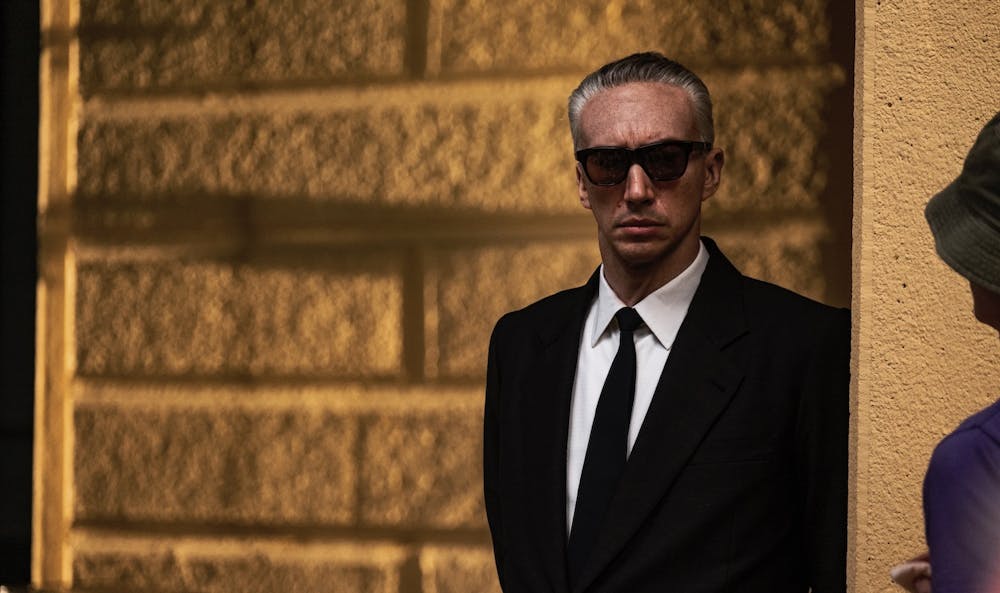Ferrari’s Italian sports cars epitomize wealth and luxury. However, before their vehicles became global symbols of vanity, the car manufacturer excelled for years in Grand Prix racing competitions, under its founder Enzo Ferrari.
Director Michael Mann’s biopic, “Ferrari,” focuses on the former Italian racer and business magnate as he grapples with the challenges of the summer of 1957. During this pivotal time, the fate of his business and family life hangs in the balance.
Mann employs the late Troy Kennedy Martin’s screenplay, which is an adaptation of Brock Yates’ 1991 book, “Enzo Ferrari: The Man, the Cars, the Races, the Machine.”
Adam Driver, showcasing his versatility, stars as Enzo Ferrari, and transforms smoothly into the then-59-year-old with slicked-back white hair and a pair of the entrepreneur’s iconic black sunglasses.
Driver adopts a reserved yet subtly intense approach to the role. Despite Ferrari's high status, he is not particularly boisterous or loud. Still, he is not afraid to raise his voice when necessary. Driver's performance seamlessly exhibits immense emotion and the cool demeanor of a famous business magnate. He perfectly portrays a man whose life could be derailed at any second, whether on the racetrack or in his own household.
Alongside Driver, Penélope Cruz delivers a fiercely impassioned performance as Laura Ferrari, Enzo’s estranged wife and business partner. Cruz plays Laura with a cold sensibility, routinely and promptly calling out Enzo when she feels he is in the wrong.
One scene exemplifying their damaged relationship takes place in their family home, where Laura shoots a gun in Ferrari’s general direction during an argument. The tension arises from the 1956 death of the couple’s 24-year-old son, Alfredo “Dino” Ferrari, who suffered from Duchenne muscular dystrophy. Laura believes Enzo could have done more to save their son, while Enzo feels he did everything possible to care for him before his death.
While the film offers insight into the manufacturing side of Ferrari, its main focus is the 1957 Scuderia Ferrari racing team, which competed in Italy’s 1,000-mile motorsport race, the Mille Miglia. Enzo assembles a skilled group of racers for the competition, including Alfonso de Portago (Gabriel Leone), Piero Taruffi (Patrick Dempsey) and Peter Collins (Jack O'Connell).
Throughout “Ferrari,” Enzo emphasizes that he is more focused on racing than manufacturing cars, saying that he sells cars to fund his racing team. However, his business administration tells him that the company needs to build more cars to survive, necessitating a partnership with a larger company like Ford Motor Company. Laura’s crucial involvement in this process complicates matters.
Additionally, going into the Mille Miglia, Enzo harbors a secret family with a woman named Lina Lardi (Shailene Woodley), and they share an 11-year-old son named Piero Lardi (Giuseppe Festinese). While Enzo has publicly hidden his connection to Pierro, both he and Lina know that this lack of public acknowledgment cannot be permanent.
Like Enzo, the film attempts to balance Enzo’s fragile family situation and his high-stakes business and racing endeavors. “Ferrari,” spanning just over two hours, strives to depict enough of these facets of Enzo’s life, but falls short in executing their conclusions, leaving the audience questioning why so much time is dedicated to the buildup.
For instance, the film generates significant anticipation for the Mille Miglia, but the execution of the racing segment proves to be underwhelming. From showing Scuderia Ferrari’s intense speed tests to highlighting Ferrari’s rivalry with car manufacturer Maserati, the film spends substantial time preparing the audience for the grand race.
One commendable aspect of the race scenes, however, is the cinematography, which outshines the writing. As the racers speed through the competition, the camera captures the green Italian hills, foggy mountains, and colorful Italian architecture. In the segments dedicated to Enzo’s personal life, Mann effectively portrays the unraveling of Enzo’s two homes but ultimately shies away from showing more of the aftermath, which would have been better suited to a shorter film.
Overall, Driver elegantly embodies a man with his back against the wall, thanks to no one other than himself.
Despite this, Driver’s dualistic portrayal of the internally and externally embattled Ferrari is unfortunately overshadowed by the underwhelming manner in which the over two-hour film deals with concluding Ferrari’s trials and tribulations.
This article was edited by Sara Winick and Abigail Pritchard. Copy editing done by Luna Jinks and Isabelle Kravis.





